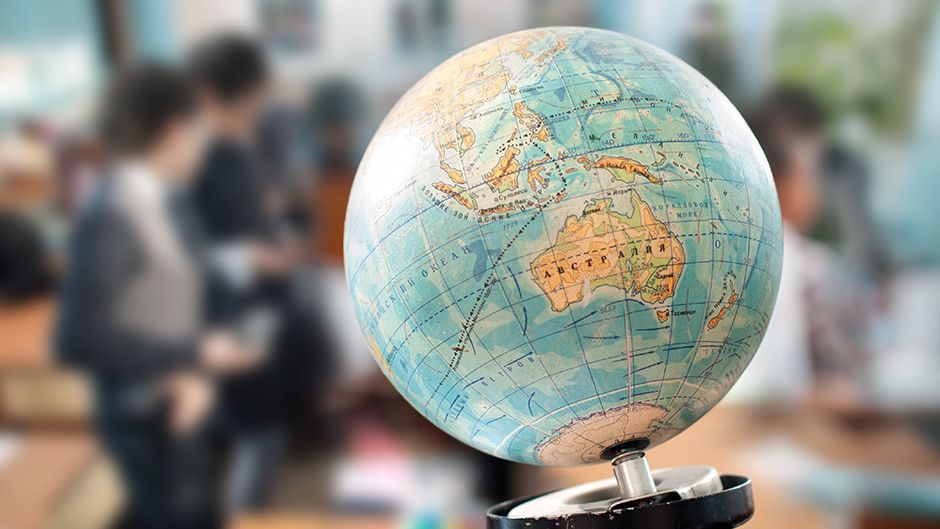“Be aware of your worth; use all of your power to achieve it. Create an ocean from a dew drop. Do not beg for light from the moon, obtain it from the spark within you.” (Iqbal)
One of the best feelings that ever traverse down one's spine is to see oneself on the final list of the UPSC civil services. To achieve that bigger feat one has to whittle down his self and carve out a shape and an outlook that is prepared in the ordeal of patience and struggle and hard work. Comfort is a drug and whosoever nourishes himself with it finds his life in a cauldron of miseries, decide what you are up to and remember the above-said quote of Iqbal, brace up yourself to know the geography of the world, as this is more interesting to know the world you dwell in and at the same time prepare yourself for the examination that will change your whole life.
Geography forms an important component of both prelims and mains syllabus, and it is very interesting to read learn and being technical it is also easy to memorise. Below is the syllabus, book list, and strategy to master world geography.
Syllabus for the world geography prelims and mains.
Salient Features of the World's Physical Geography | Geomorphology | Origin & Evolution of Earth Interior of the Earth Distribution of Continents & Oceans Plate Tectonic Theory Distribution of Earthquakes & Volcanoes Rocks & Rock Cycle Geomorphic Processes – Endogenic & Exogenic Landforms & their Evolution |
Oceanography | Hydrological Cycle Seafloor Spreading Ocean Floor Configuration Temperature & Salinity of Oceans Movement of Oceans – Waves, Tides, Currents |
Climatology | Earth’s Atmosphere – Composition & Structure Solar Radiation, Heat Budget & Temperature Atmospheric Circulation & Weather Systems World Climate (examples) |
Soil Geography | Soil & Soil Contents Process of Soil Formation Soil Forming Factors Types of Soils (examples) Soil Erosion & Conservation |
Distribution of Key Natural Resources Across the World | Types of Resources | Based on Origin, Ownership, Exhaustability, etc. |
Land Resources | Land Utilisation Land Use Pattern Land Degradation & Conservation |
Forest Resources | Types & Distribution – Grasslands, Forests, etc. Causes of Depletion Conservation of Forests
|
Water Resources | Marine & Freshwater Water Scarcity & Need For Conservation Integrated Water Resources Management |
Agricultural Resources | Types of Farming Cropping Patterns Contribution to Economy, Employment & Output Food Security |
Mineral & Energy Resources | Classification of Minerals – Ferrous & Non-Ferrous Occurrence of Minerals Conservation of Minerals Classification of Energy Resources – Conventional & Non-Conventional Occurrence of Energy Resources Conservation of Energy Resources |
Factors Responsible for the Location of Industries | Classification of Industries |
|
Location & Distribution of the Industries based on | Raw Material Labour Market Capital Land Grants & Financial Incentives Power Transport Water Communication |
Distribution of Major Industries – Iron & Steel, IT, Cotton Textile |
|
Agglomeration & Footloose Industries |
|
Important Geophysical Phenomena | Earthquakes | Why Does Earth Shake? Earthquake Waves Shadow Zone Types of Earthquake Measuring Earthquake Effects of Earthquake |
Tsunami | What Causes Tsunami Effect of Tsunami Mitigating the Impact of Tsunami |
Volcanoes | Types of Volcanoes What Causes Volcanoes? Volcanic Landforms
|
Cyclone | Tropical Cyclones Anti-Cyclone Extra-Tropical Cyclones |
Geographical Features and their Location |
| Factors Causing Changes in Critical Geographical Features Examples of Changing Geographical Features -Melting of Ice Sheets, Desertification, etc. Impact of Changing Geographical Features |
Booklist and strategy for the world geography
NCERTs from class VIII to XII are the basic books that can catapult your knowledge to the extreme level. Then one can supplement them with the GC Leong and Geography of India by Majid Hussain, to have a deeper understanding.
Before getting deeper into your studies check the syllabus and memorise it fully to update your knowledge of current affairs.
Check all the previous year’s question papers in both prelims and mains to understand the level of questions asked by the UPSC.
Practice the maps meticulously using Atlas
Join the test series for both prelims and mains and broaden your experience in a simulated environment.
Prepare your notes for the world geography for frequent revisions
Always remember that world geography is scoring in nature, being technical one can memorise it very easily. As it forms the essential part of both the prelims and mains syllabus and is a very interesting subject, one must prepare it in advance to stay motivated and build the momentum to expedite the whole preparation process. Wish you the best of luck.

